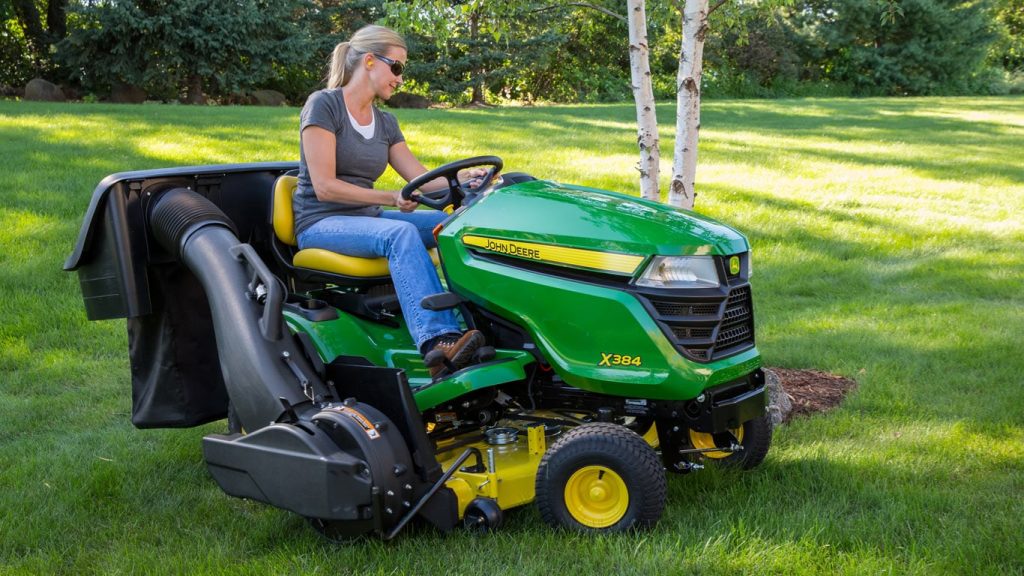John Deere Riding Mower Won’t Go Forward or Backward
It’s annoying when you’re in the middle of cutting the grass and the lawn tractor just stops working. It’s natural to worry that this fix will break the bank. It might be if there’s something wrong with the transmission, but there are other possibilities.
Wear on the drive belt, a faulty tensioner pulley, a broken tensioner spring, or an open transmission bypass can all prevent forward or backward motion on a John Deere riding mower.
If your John Deere riding mower gets stuck, check the transmission oil, hydraulic oil, oil level, and temperature.
The lawn tractors discussed here are those made by John Deere. Riding mowers are a common name for these machines. Find here the things that will keep your zero-turn John Deere from moving.
When dealing with the transmission, exercise extreme caution. Please observe all of the manual’s safety instructions. It’s important to remove the spark plug boot(s), wait for the transmission to cool down, and work on a level surface before attempting any repairs.

Before diagnosing, repairing, or operating, be sure you’ve read and understood all of the safety recommendations in the equipment’s operator’s manual. If you don’t feel confident in your ability to conduct the repair safely due to a lack of experience, training, or health, it’s best to call in an expert.
Table of Contents
How to Fix a Stuck or Non-Moving John Deere Hydrostatic Riding Mower
John Deere Riding Mower Not Operating Properly Due to Misplaced Drive Release Lever
Your hydrostatic riding mower can only be moved by pushing it with your own two hands. To move manually, the transmission must be bypassed using the control lever.
If you’ve recently bypassed the transmission, double-check that the lever isn’t stuck there. It’s possible you’ll need to close the valve by hand, using the lever, before the mower’s pedals will work again.
When you start the mower and begin pedaling, a bypass valve on some models will automatically close. whether your lawn tractor won’t move, check to see whether the bypass valve is stuck open.
John Deere Riding Mower with Missing Axle Key
Axle keys are short, thin bars between 1 and 2 inches in length that are inserted into the axle. The key to your riding mower may have rolled off the axle the last time you had to change the tire.
The wheel won’t turn unless this key is inserted. Make sure the axle key is in place if you plan on taking your John Deere tractor for a spin.
John Deere Riding Mower Drive or Pump Belt is Broken, Loose, or Worn
Make sure the drive belt is still on and snugly seated around the appropriate pulleys. The belt needs to be replaced if it shows signs of wear, such as cracks or breaks.
Tensioner Pulley Failure
Your John Deere riding mower’s tensioner pulley is almost certainly composed of hard plastic and features an integral bearing. Either the pulley or the bearing can give out at any time.
The pulley should be inspected, and if necessary, replaced. The tensioner arm needs to be kept lubricated so that it may move freely and doesn’t seize up.
John Deere Riding Mower with a Broken Idler Arm Spring
The driving belt is under tension due to the idler spring. If your lawnmower’s spring is strained, broken, or missing, you’ll need to replace it.
John Deere Riding Mower Low on Hydraulic Fluid
Maintaining peak performance of your lawn mower’s transmission system necessitates regular hydraulic oil changes at the intervals suggested by John Deere.
If the transmission hydraulic oil is old or low, the lawn mower may not move at all or perform extremely poorly.
Please be aware that the transmissions on some riding mowers, such as the John Deere 100, 200, and x300 series, are sealed and so cannot be serviced. If you are having issues with these transmissions, please contact your local John Deere dealer.
John Deere suggests changing the hydraulic/transaxle oil and filters once every 200 hours on most modern lawn tractors, such as the x500 and x700 series, after the initial 50-hour “break-in” period. For maintenance schedules tailored to your machine, please refer to the handbook.
Hydraulic and transmission systems from John Deere benefit from HY-GARD low-viscosity oil. Using a different kind of oil might potentially ruin the transmission or slow down the riding mower. It’s not safe to combine different oils with HY-GARD oil.
If your hydraulic oil is low, you should refill it until it reaches the full mark when the oil is at room temperature. When you see the oil level dropping, it’s also a good idea to inspect for hydraulic fluid leaks.
John Deere Riding Mower’s Sweltering Hydraulic Fluid
Operating a John Deere with the incorrect hydraulic fluid, old hydraulic fluid, or low hydraulic fluid causes the oil to be unable to lubricate the hydraulic system adequately, leading to increased friction and overheating.
The temperature of the hydraulic fluid may reflect the severity of the damage. If your lawn tractor’s hydraulic oil continues to run unusually hot after you’ve changed the oil, take it to a John Deere dealer.
It could mean that your transaxle oil cooler or fan is broken or that your transmission is damaged.
Is Your John Deere Mower Still Giving You Trouble?
Over the course of owning a John Deere mower, you’re bound to run into a few different issues. Problems with starting, shutting off mid-mowing, vibrating excessively, cutting unevenly, or simply not moving are all possibilities.






